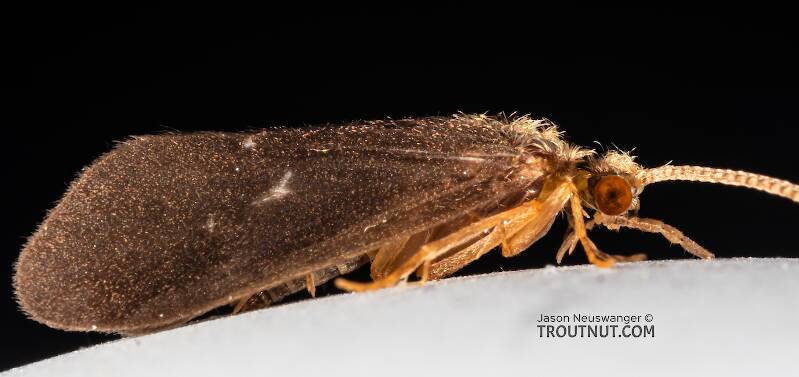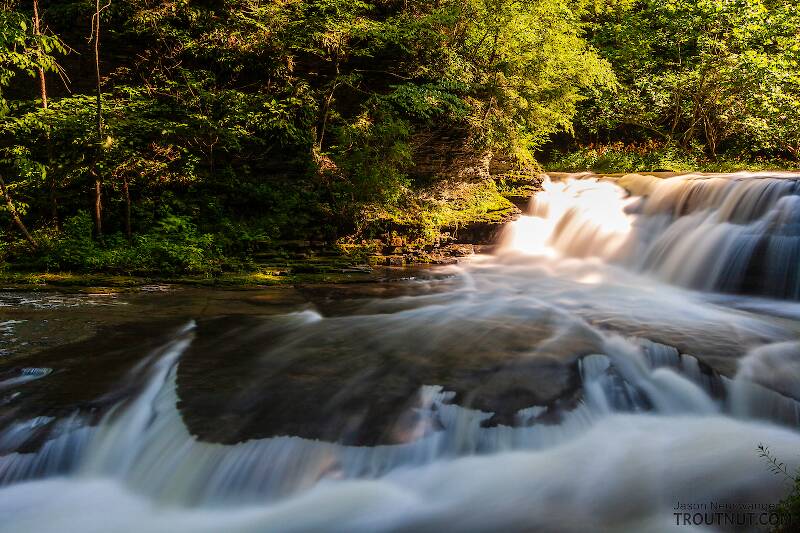
Salmonflies
Pteronarcys californica
The giant Salmonflies of the Western mountains are legendary for their proclivity to elicit consistent dry-fly action and ferocious strikes.
Featured on the forum

This specimen keys pretty easily to Onocosmoecus, and it closely resembles a specimen from Alaska which caddis expert Dave Ruiter recognized as this genus. As with that specimen, the only species in the genus documented in this area is Onocosmoecus unicolor, but Dave suggested for that specimen that there might be multiple not-yet-distinguished species under the unicolor umbrella and it would be best to stick with the genus-level ID. I'm doing the same for this one.

Troutnut is a project started in 2003 by salmonid ecologist Jason "Troutnut" Neuswanger to help anglers and
fly tyers unabashedly embrace the entomological side of the sport. Learn more about Troutnut or
support the project for an enhanced experience here.
Dinky Light Summer Sedges
This common name refers to only one genus. Click its scientific name to learn more.
Caddisfly Genus Nyctiophylax
These are often called Dinky Light Summer Sedges.

This specimen is certainly Nyctiophylax and most likely Nyctiophylax affinis. I don't know my caddisfly parts well enough to definitively follow the Nyctiophylax key in Morse (1972), but that source states that affinis is the predominant Midwestern species, being widespread and common in the region where I found this one. The anatomy of this one seems to match those at least as well as the other two potential options based on range, Nyctiophylax uncus and Nyctiophylax banksi.

